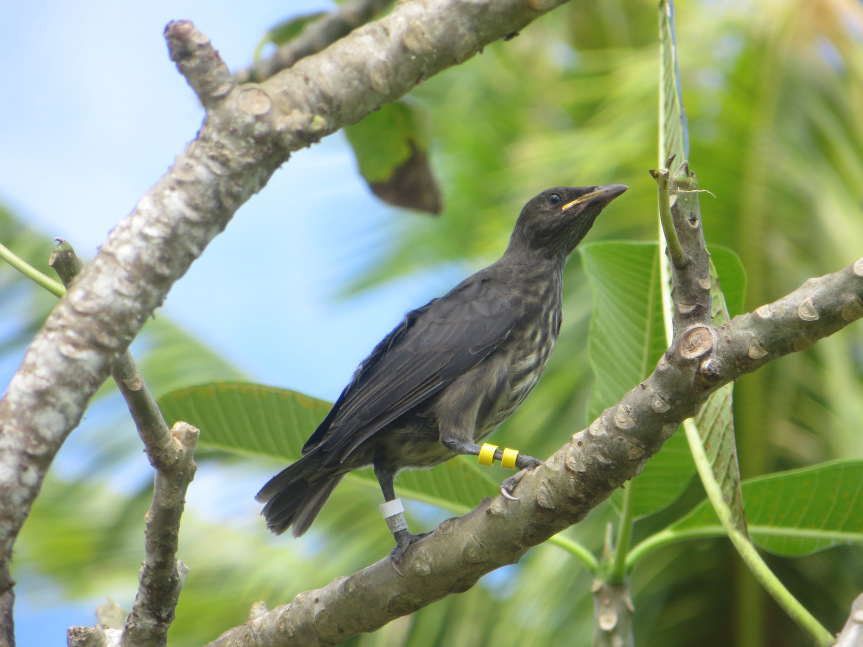Guest post by researcher Henry Pollock
Linked paper: Pervasive impacts of invasive brown treesnakes drive low fledgling survival in endangered Micronesian Starlings (Aplonis opaca) on Guam by H.S. Pollock, J.A. Savidge, M. Kastner, T.F. Seibert, and T.M. Jones, The Condor: Ornithological Applications.
For bird aficionados, waking up on Guam can be a surreal experience. The soundscape is nearly devoid of birdsong other than the clucking of chickens and the occasional chirp of a Eurasian Tree Sparrow. Guam’s silent forests are the work of the brown treesnake, an invasive predator that was accidentally introduced to the island after World War II. Following its initial establishment on Guam, the brown treesnake population exploded, causing the extirpation of ten out of the island’s twelve native forest bird species within a few decades. However, a couple of species have managed to persist, and understanding how they’ve managed this feat in the face of such a formidable predator can inform future avian conservation strategies and snake suppression efforts on Guam.
Our research focused on the Micronesian Starling or Sali, a glossy black, gregarious bird that is a staple of forests throughout the Mariana Islands. On Guam, Sali declined precipitously following the introduction of the brown treesnake, but a small population has managed to persist in an urbanized landscape on Andersen Air Force Base in northern Guam. To understand why Sali have survived while so many other bird species have disappeared, we set out to study fledgling survival. The post-fledging period, when a bird has left its nest but is still dependent on its parents, is a period of great vulnerability, because young birds are often clumsy, sedentary, and less equipped to evade predators than adults.
To track fledglings through this crucial period, we attached small radio transmitters to Sali just before they left the nest and then came back each day to see whether our birds had survived the previous night and where they were spending their time. All of our birds fledged from nest boxes in an urban housing area, and tracking young birds through backyards on a military base was an interesting experience. We had regular run-ins with the military security forces, as well as also a lot of curious homeowners wondering what exactly we were doing decked out in field gear and holding large antennas! After a while, though, people got to know us, and many were truly interested in what we were doing and excited to know that they had a locally endangered bird species in their own neighborhood.
Our findings were staggering: only 25% of the fledglings survived, one of the lowest fledgling survival rates ever recorded for any bird species. The primary culprit was, of course, the brown treesnake, which caused approximately 60% of all mortality. However, cats were also an important source of mortality, responsible for around 20% of fledgling deaths. Beyond establishing these baseline numbers, however, we were also able to identify spatial patterns of predation risk and provide important management recommendations for future bird conservation on Guam.
We found that fledglings from nest boxes closer to the forest were more likely to be killed by brown treesnakes, indicating that locating nest boxes in core urban areas away from the forest perimeter would maximize fledgling survival. Furthermore, our data showed that brown treesnake predation actually extended weeks beyond the vulnerable post-fledging period, demonstrating again that these snakes are uniquely pernicious predators and that intensified snake control efforts are needed. We hope that our research provides impetus for further controlling the invasive brown treesnake and serves as a stepping stone for bringing birds back to Guam and enriching the island’s soundscape once again.
